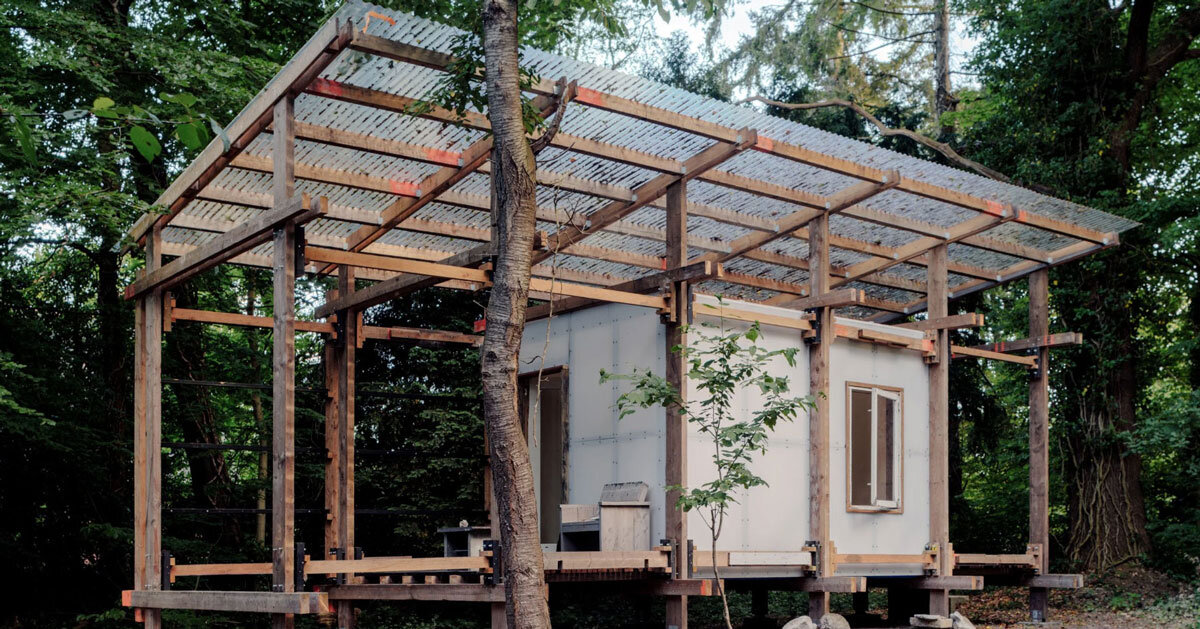Studio-Method builds Low-Tech Pavilion from Salvaged Materials
Set within the UNESCO-listed arboretum of Fredriksoord in the Netherlands, The Reading Room in the Forest is a retreat space designed and built by Studio-Method as part of DeProef, a new hub for art and ecology. Constructed with 98% salvaged materials, the low-tech pavilion explores architectural possibilities grounded in reuse, improvisation, and repair, rather than efficiency or industrial newness.
The structure responds to the historical context of Fredriksoord, a site rooted in 18th-century social housing experiments. This region was part of a social experiment to eradicate urban poverty by relocating people into tightly controlled agricultural colonies. While originally envisioned as utopian, the scheme soon turned rigid and colonial. In resistance, some settlers formed ‘pioneer colonies,’ building improvised homes from scavenged materials, methods that inform the project’s conceptual and material framework.
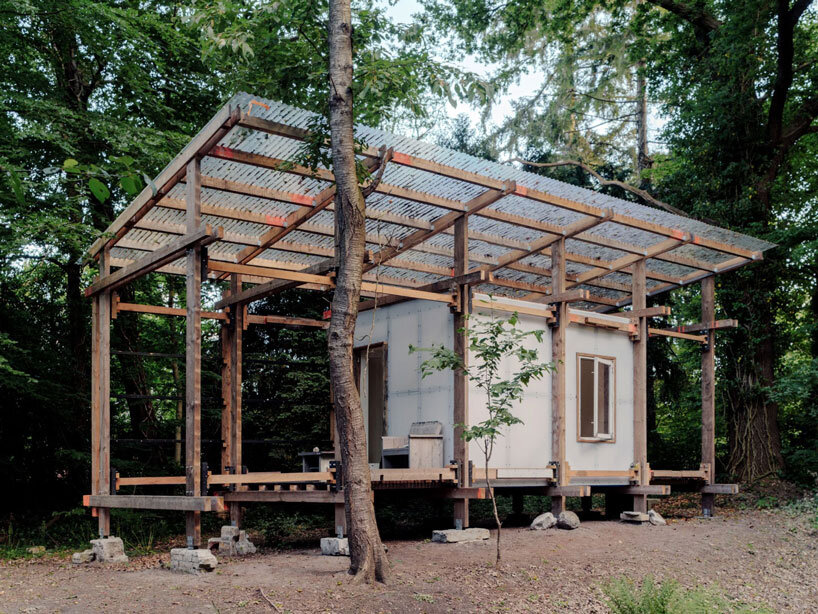
all images by Riccardo De Vecchi
architectural autonomy, material ethics, and radical reuse
Rotterdam-based architecture practice, Studio-Method, employed a design methodology they call contingent design, which emphasizes site responsiveness, iterative processes, and construction without reliance on contractors or prefabricated systems. The Reading Room was realized with a modest budget and no commercial prefabrication. The resulting structure reflects an emphasis on architectural autonomy, material ethics, and radical reuse.
The pavilion achieves a 98% recycled mass rate, is estimated to sequester 7 tonnes of CO₂, and records a Milieu Prestatie Gebouwen (MPG) score of 0.16, significantly below the Dutch legal threshold of 0.80. Approximately 30% of the building materials were salvaged directly from the DeProef site. These include discarded fleece from local farms, reclaimed mineral wool, salvaged concrete rubble, greenhouse acrylic panels, and reused timber from previous constructions.
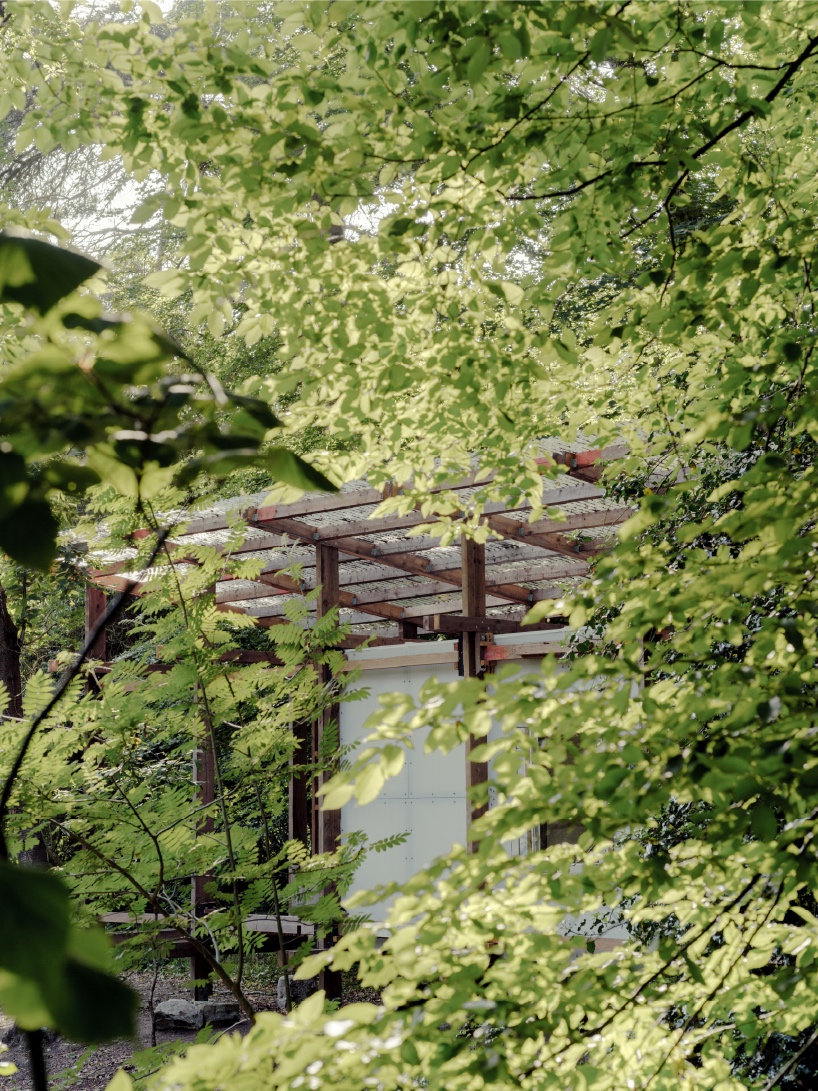
Reading Room blends with the surrounding landscape through its low-tech, natural character
Studio-Method assembles Reading Room In The Forest by hand
Manual processing was central to the build. Materials were cleaned, restored, and adapted on-site. Window frames were retrofitted; acrylic panels were recovered and repurposed; raw fleece was washed and prepared by hand. The design and construction processes prioritize maintenance and repair as design strategies, redefining architecture through the lens of material care and environmental impact.
The Reading Room’s low-tech approach avoids standardized systems in favor of site-specific improvisation. Fasteners and the semi-transparent roof are among the few new components. The structure’s environmental strategy is complemented by its spatial quality: a modest, contemplative space that supports informal public use while integrating with the surrounding forest landscape. This project positions reuse not as a limitation but as a design language. It contributes to current discourse on architectural sustainability by proposing that circular practices can be compatible with aesthetic considerations, public engagement, and construction viability.
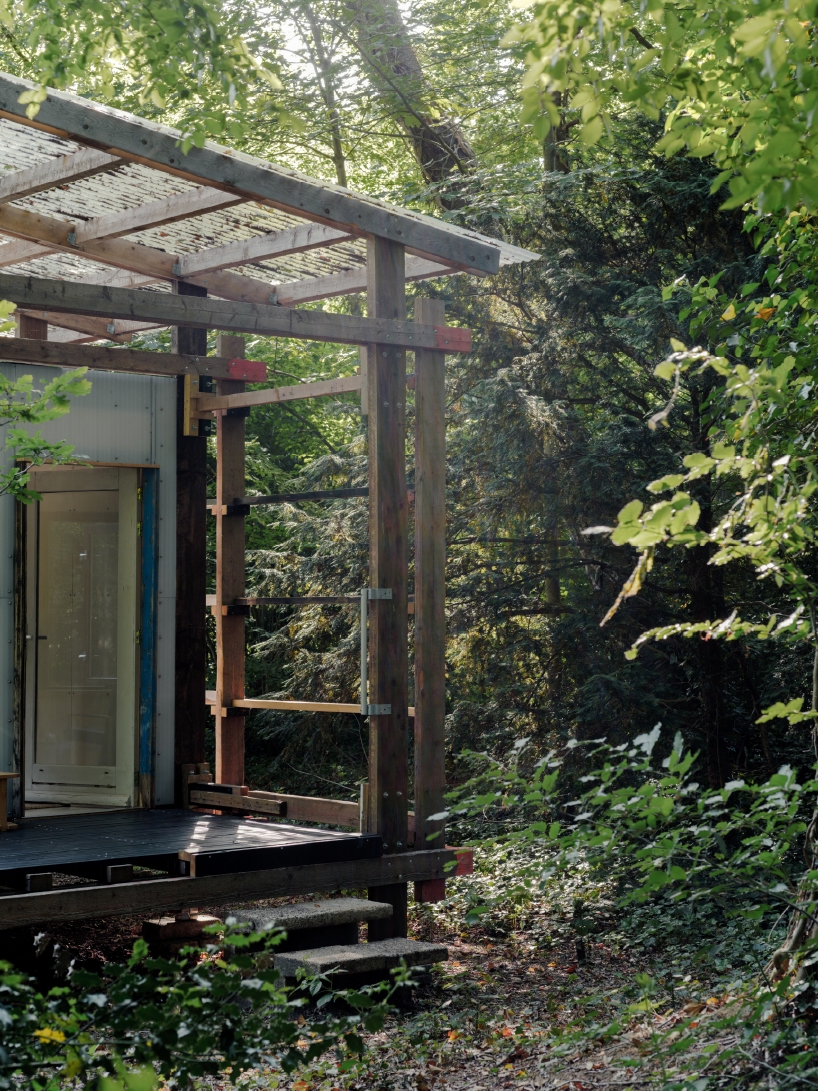
U-shaped concrete blocks found on-site were flipped and sunk to form steps, as a salvaged aluminum bar offers grip
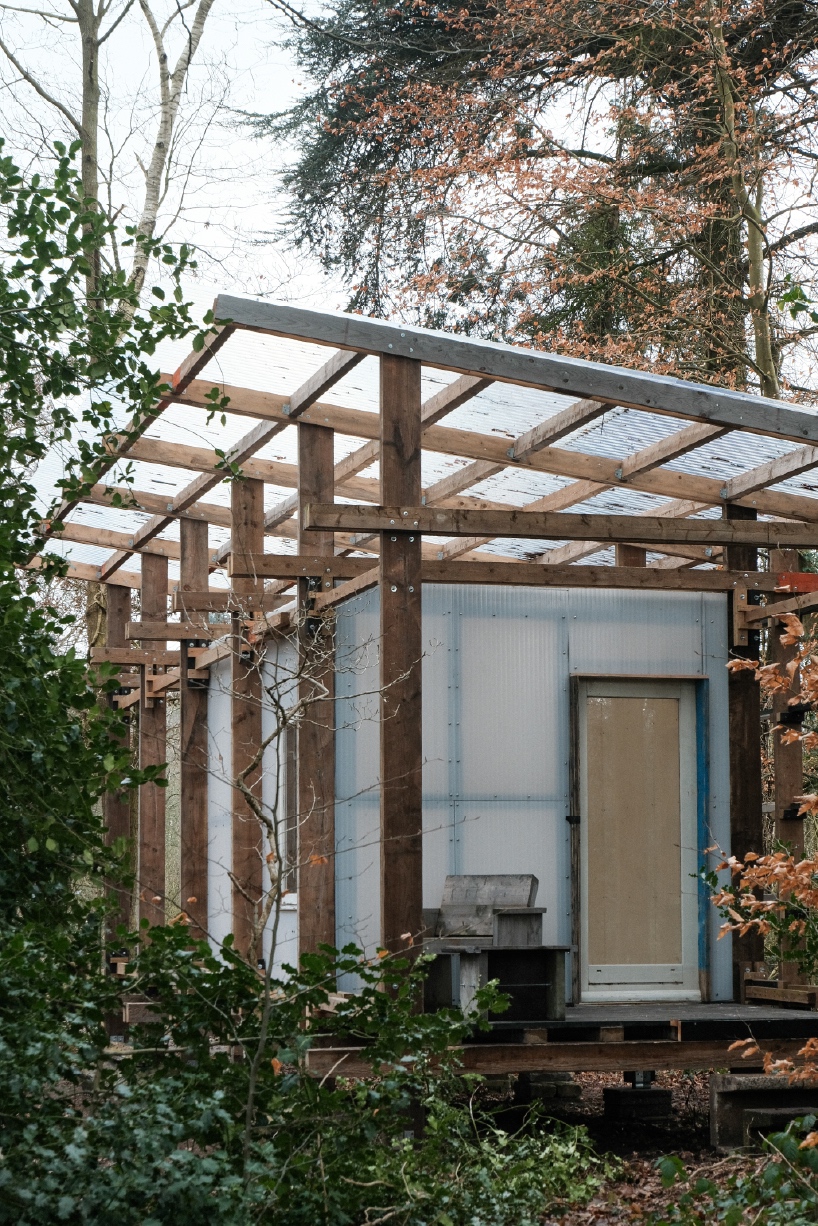
glass doors lead to terraces, aligning the plan with forest paths for a walk-through experience

